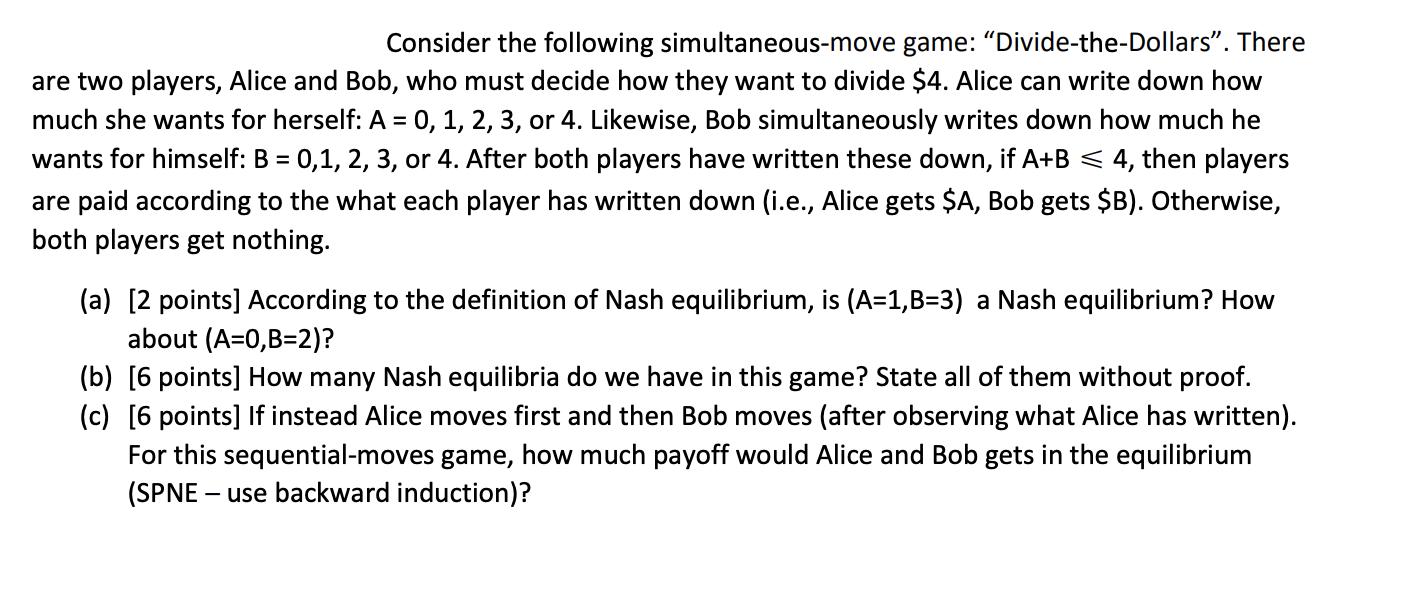Answered step by step
Verified Expert Solution
Question
1 Approved Answer
Consider the following simultaneous-move game: Divide-the-Dollars. There are two players, Alice and Bob, who must decide how they want to divide $4. Alice can

Consider the following simultaneous-move game: "Divide-the-Dollars". There are two players, Alice and Bob, who must decide how they want to divide $4. Alice can write down how much she wants for herself: A = 0, 1, 2, 3, or 4. Likewise, Bob simultaneously writes down how much he wants for himself: B = 0,1, 2, 3, or 4. After both players have written these down, if A+B 4, then players are paid according to the what each player has written down (i.e., Alice gets $A, Bob gets $B). Otherwise, both players get nothing. (a) [2 points] According to the definition of Nash equilibrium, is (A=1,B=3) a Nash equilibrium? How about (A=0,B=2)? (b) [6 points] How many Nash equilibria do we have in this game? State all of them without proof. (c) [6 points] If instead Alice moves first and then Bob moves (after observing what Alice has written). For this sequential-moves game, how much payoff would Alice and Bob gets in the equilibrium (SPNE - use backward induction)?
Step by Step Solution
★★★★★
3.42 Rating (149 Votes )
There are 3 Steps involved in it
Step: 1
Alice bab playing divide the dollars A 0 or 1 or 2 or 3 or 4 B 0 1 ...
Get Instant Access to Expert-Tailored Solutions
See step-by-step solutions with expert insights and AI powered tools for academic success
Step: 2

Step: 3

Ace Your Homework with AI
Get the answers you need in no time with our AI-driven, step-by-step assistance
Get Started


